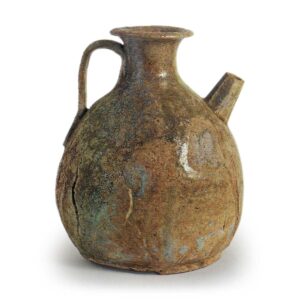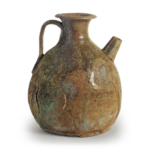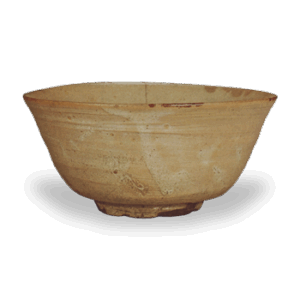
Excavated from an old kiln site, Nisshin City, Aichi Prefecture, Japan
9th century
Height 13.2 cm, mouth diameter 4.7 cm, body diameter 10.6 cm, bottom diameter 7.8 cm
As mentioned above, there are two types of tokutsu (sake bottle) with flat handles attached from the neck to the shoulder: small and large. There are two types of small bottles: those with handles and those without, and a small number of the former were made with a spout on the shoulder. The origin of this type of vase is the Yuezhou celadon water jar produced at the end of the Tang dynasty, which is similar in form to the Yuezhou celadon water jar. The type with a spout is typical of the earliest examples, with a large bulge on the body.
The 11th-century version, which lost its handle, lost its shoulder tension, and the neck of the mouth was relatively larger.
Although this vessel has a mountain flaw on the lower half of the body, it is one of the few examples of a water jar that has unusually retained its perfect shape. The ash glaze applied to the entire surface melts well, and the sky-blue glaze running down the lower half of the vessel is a highlight. There are thread cut marks on the underside of the bottom, indicating that the vessel was wheel-thrown and water-ground.








